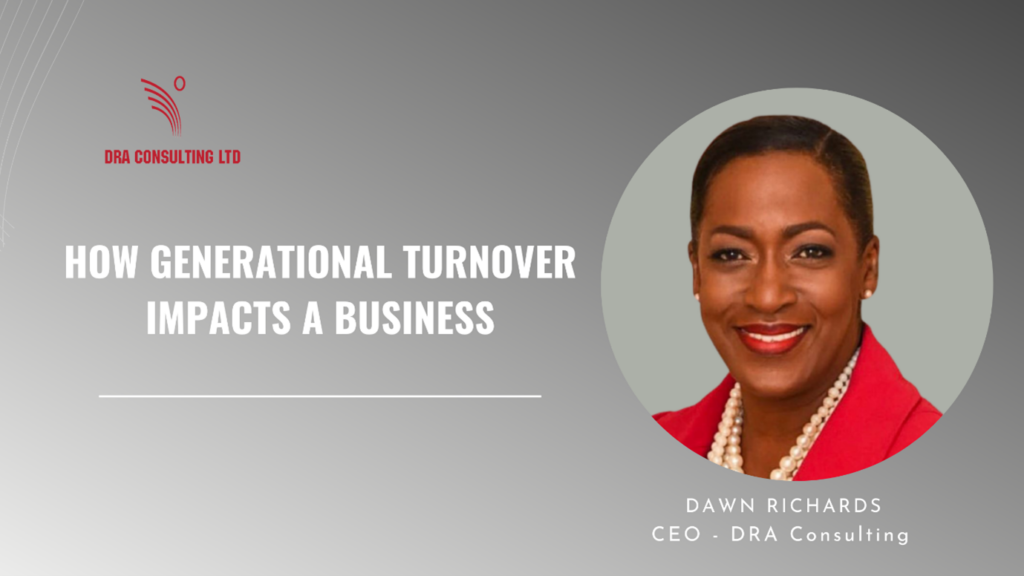Many businesses are in need of a cultural overhaul. But, guess what? They may not be aware of this fact. So, what happens is that there is this never-ending misdiagnosis of the maladies plaguing the business and a subsequent parade of ineffective prescriptions that don’t make a dent in the process of business restoration.
Meanwhile, on the other side of the track, there are those businesses that do recognize this need and have begun the process of recreating cultures that are aligned to high performance, innovation, wellness, growth and employee actualization.
This latter group of businesses that are active in the area of cultural reformation, understand that we exist in a time where a multigenerational workforce typifies the topography of business environments. Given this scenario of diversity, it’s expected that values, performance standards, personalities, behavioural styles and work ethics, will collide. The greater the generational diversity and turnover, the greater the propensity for collision.
One of the most compelling levers for driving cultural overhaul therefore, is the impact of generational turnover.
One of the most compelling levers for driving cultural overhaul therefore, is the impact of generational turnover. Some of the shifts that have occurred within businesses due to this turnover, have been connected to levels of tolerance for customer privilege, levels of compassion for customers, experience equity and levels of tolerance for digital ignorance.
There has been a shift away from resigned acceptance, to intolerance for customer arrogance. In the past, rude and disrespectful behaviour on the part of customers was tolerated, because of the obsessive belief that, “The customer is always right.” In recent times, this idiom has come under more and more pressure to be challenged in the court of public encounters. There has been a push-back because the abuse encountered at the hands of some customers, is regarded by some generations as totally unacceptable and unworthy of being protected by customer privilege.
Another shift has been from radical compassion, to indifference to the customer’s needs and feelings. There have been times when customers would have experienced deep empathy, inexhaustible patience and authentic warmth, during interactions with employees. Many complaints now centre around customer dissatisfaction and disgust regarding the human constituent of the encounter. Generational employees are no longer willing to develop the empathy bandwidth required to support some of the tension encountered during customer interactions.
Generational employees are no longer willing to develop the empathy bandwidth required to support some of the tension encountered during customer interactions.
The other shift amongst some generations, has been from blind acceptance of being perceived and treated as second—class citizenry, to the demand for experience equity. The thinking here, is that internal customers matter as much as external customers and therefore, should be elevated to equal beneficiary status. ‘
An almost permanent level of impatience with the level of digital ignorance displayed by some customers, is becoming a noticeable trend amongst generations. Whilst some businesses have been able to resolve this flaw through an effective recruitment of “right fit” employees and customer engagement training, other businesses still struggle with a disproportionate quantum of impatient employees, whose “unwillingness to assist customers” threshold, is way too low.
You may be wondering at this point, what steps a business can take to maximize the value to be extracted in this generational turnover trend.
Generational turnover cycles should be mined to extract their “zones of genius,” meaning the areas where unique and superlative talent exists.
Well, for starters, a business will need to stop complaining about the challenges being posed by its multigenerational workforce. This topography is the new normal and has been for a while. When done right, embracing diverse generational representation creates an opportunity to enrich business performance.
Next, the business can stop showing overt preference for one generation over another. The fastest way to create discord within a multigenerational environment, is to freeze out a generation. If members of this cohort feel unwelcome, guess what? That discord will show up as interpersonal conflict with external customers.
Generational turnover cycles should be mined to extract their “zones of genius,” meaning the areas where unique and superlative talent exists. Actually, we’re on the verge of an impending cycle, which will be dominated by a generation for which digital ubiquity, extreme social connectivity, mental awareness and cognitive augmentation, are shaping up to be features of their defining footprint.
Ultimately, how generational turnover impacts service excellence and customer experience, depends on how a business navigates the phenomenon.
Ultimately, how generational turnover impacts service excellence and customer experience, depends on how a business navigates the phenomenon.
A point to remember, is that each successive generation has a foot in the employee workspace, as well as in the customer marketplace. A business will do well to tap into the creative intelligence that resides in its employees, in order to serve its customers, successfully.
The business can either allow itself to be distracted by a sense of generational fatalism and suffer the penalties attached to this mindset, or it can choose to live in a state of cognitive inquiry.
One option will deliver a win, the other will deliver a squandered opportunity.

